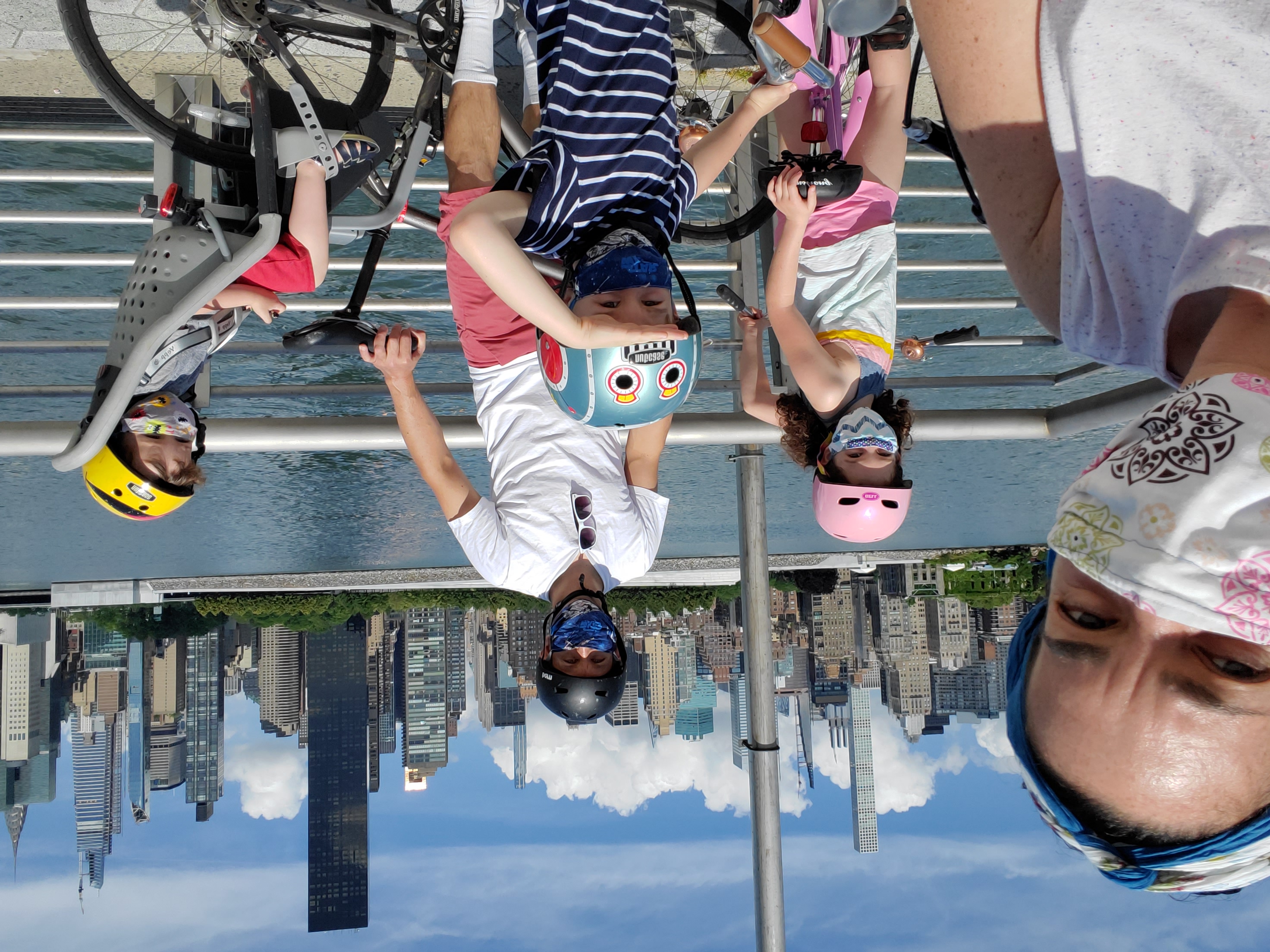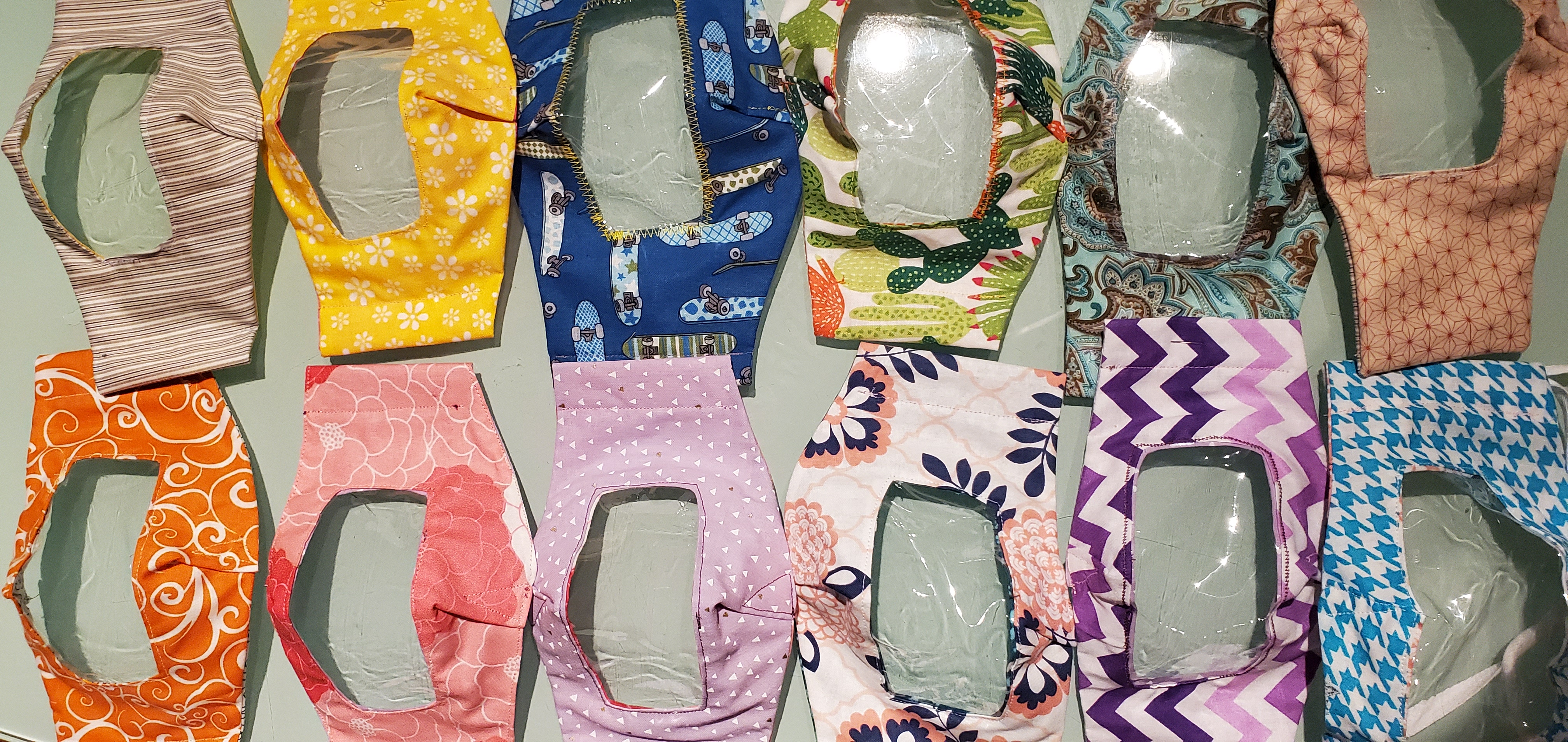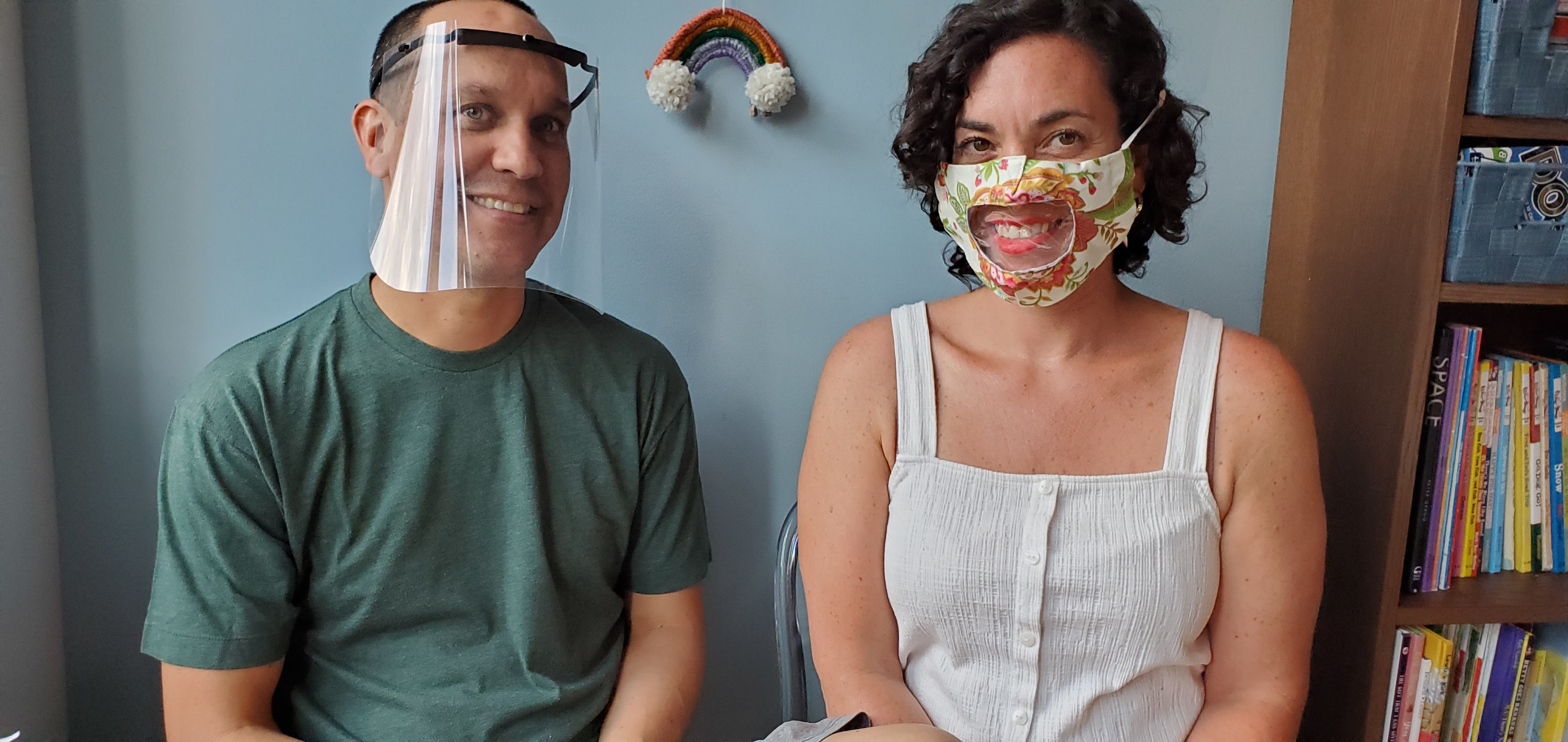Like many of us when the pandemic hit, Stephanie Samperi-González wanted to help. Stephanie and her family live in Brooklyn, NY, part of New York City, where the pandemic first hit America the hardest. While she homeschooled her children by day, she made masks by night.

Watching her brother-in-law who is hard of hearing struggle to read lips while conversing with those wearing a traditional mask, Stephanie set out to make transparent masks for him and the people he interacted with in his daily life. She carefully constructed them out of transparent vinyl and cotton. After donating stockpiles of cloth masks to NYC Makes PPE and Maimonides, a Brooklyn hospital overwhelmed with Covid-19 patients, and then transparent masks to people with hearing disabilities in her community of Greenpoint and Williamsburg, her story gained popularity and has spread throughout the internet.
She carefully constructed them out of transparent vinyl and cotton.

Stephanie shares that the masks have not only helped her brother-in-law but also people outside of the hard of hearing communities. Teachers and healthcare workers alike have reached out to Stephanie to get ahold of these masks in order to better connect with their patients and students.
The flood of positive feedback comes at no surprises, there’s a reason for this.
"The masks have been uplifting and liberating for me. Not only is it more helpful for me to communicate with others, it's also been extremely helpful for me to wear so that I can share my facial expressions with others as my facial expression is an important part of my speech and life.
I would also encourage those in hospitality and customer service to think about their employees wearing these masks so they can share facial expressions as well."
- Jeff Orlowsky
In a 2008 study, it was estimated that 30 million (12.7%) of Americans have bilateral hearing loss. That number jumps to 48.1 million (20.3%) when including individuals with unilateral hearing loss.
This translates to 1 in 8 individuals 12 years and older having bilateral hearing loss, and nearly 1 in 5 individuals having a unilateral or bilateral hearing loss.
The Myth: Deaf and hard of hearing people are experts in lip reading
While it is very likely that this transparent mask will help individuals who are hard of hearing, it is not a permanent solution to helping those who are benefiting from it. The larger conversation surrounds the myth that deaf and hard of hearing people being experts in lip reading. Even those who can lip read very well, on average, only grasp 50% of the conversation. Assumptions that people within the Deaf Community can just “read lips” to get by can be dangerous. It affects the Individualized Education Program’s (IEP) and educational settings as many teachers do not have training with this population. Hearing loss can be undetected or misdiagnosed for years, resulting in individuals who show little to no symptoms to miss language acquisition milestones and risk lifelong disadvantages. This presumption also makes public bars and other loud places nearly impossible settings for them to have genuine conversations.
“The deaf nod” is a common joke within the community but it is a painful reality to those who must succumb to this option because it is assumed that they are able to understand and keep up with the conversation purely through lip reading. To those who are unfamiliar, the deaf nod is when a Deaf person will nod and smile to make the hearing person feel more comfortable. At that point, they’ve typically given up on having an actual conversation with the person.
However, the grammar of American Sign Language (ASL) is notated by facial expressions. A raised or lowered eyebrows can be the difference between a statement or a question. Pursed lips or gestures punctuate storytelling. Storytelling is a core tenet of ASL. Facial expressions are imperative for Deaf people.
Facial expressions are imperative for Deaf people.
It is important not to perpetuate narratives that can negatively affect marginalized communities. With that being said, the transparent masks Stephanie and members of her community have dedicated their time to make are greatly benefiting society as a whole.

Research conducted by Stephen Porges on the Polyvagal Theory tells us that trauma responses can be triggered and stored in our bodies. That the human flight, fight and freeze responses can be triggered at the slightest sense of unsafety. A clear and obvious indication that a person feels safe in a social space is often detected by the person’s facial expression.
A clear and obvious indication that a person feels safe in a social space is often detected by the person’s facial expression.
There’s nothing that feels more unsafe than a virus we can’t see. One of Porges’ understudies, Justin Sunseri LMFT, discusses the power of co-regulation in his podcast, The Polyvagal Podcast. Co-regulation is dependent on observing the responses of other humans in order to feel safe. We can’t co-regulate if our facial affects are covered or blocked by traditional protective masks.

Sometimes the story isn’t where we started but where we end up.
Stephanie’s inspiration stemmed from wanting to help her brother-in-law but her act of kindness went on to benefit hundreds of people similar to her brother-in-law and exemplifies the power of unity. In a time when everyone has been isolated, the power of human connection and empathy is more important than ever. While Stephanie has been busy donating these masks to those who are hard of hearing, she tells us she is thinking about how schools and speech therapist who work in schools could benefit from them. She says "It would be wonderful to get funding to support making more for the NYC school districts. Children most definitely learn better when they can see their teacher's expressions. If this would be possible it would be amazing."
"It would be wonderful to get funding to support making more for the NYC school districts. Children most definitely learn better when they can see their teacher's expressions. If this would be possible it would be amazing."
For more information on the masks Stephanie and her husband are creating and how you can get involved, you can visit her website https://madewithease.com/ and visit their Instagram page @madewithease.
1. Do you have a similar problem that needs solving?
Request help here
2. Do you have an idea or personally want to offer help
Offer help here
3. You can share this content!









